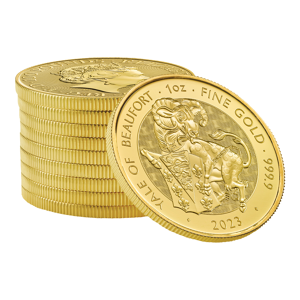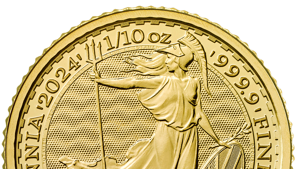Tavex uses cookies to ensure website functionality and improve your user experience. Collecting data from cookies helps us provide the best experience for you, keeps your account secure and allows us to personalise advert content. You can find out more in our cookie policy.
Please select what cookies you allow us to use
Cookies are small files of letters and digits downloaded and saved on your computer or another device (for instance, a mobile phone, a tablet) and saved in your browser while you visit a website. They can be used to track the pages you visit on the website, save the information you enter or remember your preferences such as language settings as long as you’re browsing the website.
| Cookie name | Cookie description | Cookie duration |
|---|---|---|
| tavex_cookie_consent | Stores cookie consent options selected | 60 weeks |
| tavex_customer | Tavex customer ID | 30 days |
| wp-wpml_current_language | Stores selected language | 1 day |
| AWSALB | AWS ALB sticky session cookie | 6 days |
| AWSALBCORS | AWS ALB sticky session cookie | 6 days |
| NO_CACHE | Used to disable page caching | 1 day |
| PHPSESSID | Identifier for PHP session | Session |
| latest_news | Helps to keep notifications relevant by storing the latest news shown | 29 days |
| latest_news_flash | Helps to keep notifications relevant by storing the latest news shown | 29 days |
| tavex_recently_viewed_products | List of recently viewed products | 1 day |
| tavex_compare_amount | Number of items in product comparison view | 1 day |
| Cookie name | Cookie description | Cookie duration |
|---|---|---|
| chart-widget-tab-*-*-* | Remembers last chart options (i.e currency, time period, etc) | 29 days |
| archive_layout | Stores selected product layout on category pages | 1 day |
| Cookie name | Cookie description | Cookie duration |
|---|---|---|
| cartstack.com-* | Used for tracking abandoned shopping carts | 1 year |
| _omappvp | Used by OptinMonster for determining new vs. returning visitors. Expires in 11 years | 11 years |
| _omappvs | Used by OptinMonster for determining when a new visitor becomes a returning visitor | Session |
| om* | Used by OptinMonster to track interactions with campaigns | Persistent |
| Cookie name | Cookie description | Cookie duration |
|---|---|---|
| _ga | Used to distinguish users | 2 years |
| _gid | Used to distinguish users | 24 hours |
| _ga_* | Used to persist session state | 2 years |
| _gac_* | Contains campaign related information | 90 days |
| _gat_gtag_* | Used to throttle request rate | 1 minute |
| _fbc | Facebook advertisement cookie | 2 years |
| _fbp | Facebook cookie for distinguishing unique users | 2 years |
Pre-Owned vs. New Bullion Coins

When it comes to investing in bullion coins, one of the critical decisions you’ll face is whether to buy new or pre-owned coins. Both options have their unique advantages and considerations.
This comprehensive guide delves into the world of pre-owned and new bullion coins, helping you make an informed decision based on factors such as cost, investment value, financial performance, quality, and more.
What Are Bullion Coins?

Bullion coins are coins made from precious metals, typically gold or silver, and are primarily used as investment vehicles. Their value is determined by the metal content rather than face value. These coins are produced by various mints worldwide and come in various sizes and designs.
New bullion coins are minted and sold for the first time, while pre-owned coins have been previously owned and possibly circulated
Both types hold intrinsic value as an asset class based on their metal content, but other factors can influence their market value and appeal to investors.
Advantages of New Bullion Coins

Pristine Condition and Assurance
New bullion coins come in an untouched, high quality mint condition which is highly valued by collectors and investors for its aesthetic and physical perfection.
This impeccable state not only enhances their visual appeal but also provides assurance about the coin’s quality, ensuring that it’s free from any wear or damage.
Certification and Mint Packaging
These coins typically include certifications that authenticate their purity and origin.
This offers investors a sense of security. The original mint packaging, apart from protecting the coin, significantly adds to its collectability and potential long-term value.
This packaging is often sought after in the collector’s market as it contributes to the coin’s provenance and overall desirability.
Benefits of Pre-Owned Bullion Coins

Cost-Effectiveness
Pre-owned bullion coins are often more affordable than new ones. They typically have a lower premium over the metal’s spot price, offering a cost-effective option for investors focused on the intrinsic metal value.
This affordability makes it easier for investors to diversify their holdings or invest in larger quantities of precious metals.
Historical Significance
Many pre-owned coins carry historical or collectible significance. Their value extends beyond the metal content, especially if they are rare or from notable historical periods.
Collectors often seek such coins for their unique stories and historical context, which can enhance their value and appeal over time. This aspect of pre-owned coins can offer both sentimental value and potential for appreciation in worth.
Considerations When Buying Pre-Owned Bullion Coins
Quality and Authenticity
The quality and authenticity of pre-owned coins are paramount.
Wear, tear, and previous use can significantly impact their condition and value.
It’s important to examine the coin’s physical state and verify authenticity, particularly for rare or historical pieces.
Buying from reputable dealers who provide guarantees of authenticity and quality is crucial, as it reduces the risk of counterfeit coins and ensures a secure investment.
Market Demand
Understanding the market demand for specific pre-owned coins is essential for making informed investment decisions. Factors influencing demand include rarity, historical significance, design, and collector interest.
Market trends can vary, affecting the value and resale potential of certain coins. Keeping abreast of these dynamics helps in choosing coins that have a higher likelihood of appreciating in value or maintaining their worth over time.
Investment Perspective: New vs. Pre-Owned

Short-Term vs. Long-Term Investment
New bullion coins, being in mint condition, are often more appealing for short-term investments. Their impeccable state and the immediate availability make them attractive for investors looking to capitalise on current market trends. These coins are less likely to have any damage that could diminish their value, ensuring a safer short-term asset.
On the other hand, pre-owned coins are generally seen as more suitable for long-term investments. Their appeal lies in their historical significance and potential rarity, which can appreciate over time. As these coins accrue historical and collector value, they may offer a higher return in the long run compared to new coins, whose value is more closely tied to the current market price of the metal.
Diversifying Your Portfolio
Incorporating both new and pre-owned bullion coins into your investment portfolio can offer a balanced approach. This diversification allows investors to benefit from the immediate market-responsive value of new coins while also capitalising on the potential long-term appreciation of pre-owned coins.
Such a strategy can mitigate risks associated with market fluctuations and enhance the overall resilience and potential of your investment portfolio.
Key Takeaways
When investing in bullion coins, the choice between new and pre-owned coins hinges on various factors like cost, quality, authenticity, and investment strategy.
New coins offer pristine condition and guaranteed authenticity, appealing for short-term investments and collectors. Pre-owned coins, while more affordable, bring historical significance and long-term investment potential.
Understanding market demand and ensuring quality is crucial for pre-owned coins. Diversifying your portfolio with both types can balance immediate value and long-term appreciation, aligning with different investment goals.



















